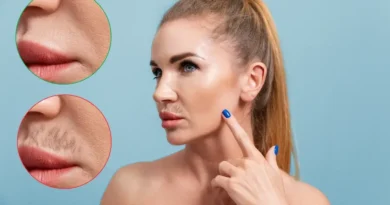Protective Eyewear: How to Prevent Future Eye Problems
The eyes are invaluable organs that allow humans and animals to perceive the world around them. However, they are susceptible to various injuries and eye problems due to numerous factors such as accidents, excessive exposure to harmful substances, and environmental hazards. One effective measure to prevent future eye problems is the use of protective eyewear. What is the importance of protective eyewear? How can a person safeguard their eyes and prevent potential eye problems?
Understanding the Importance of Protective Eyewear
Protective eyewear serves as a shield for the eyes, safeguarding them against potential hazards. Whether engaging in sports, working in hazardous environments, or performing household chores, protective eyewear acts as a barrier between the eyes and potential dangers. By wearing appropriate eyewear, a person can significantly reduce the risk of eye injuries and associated complications.
For example, radiation glasses from Nike are essential for some workers but would be of no benefit to a professional athlete. Every person must know the type of protective eyewear they should use and when this eyewear should be worn. They also need to know how to maintain the eyewear to ensure optimal protection.
Types of Protective Eyewear
Protective eyewear comes in several types. Knowing which eyewear to use when ensures the eyes receive the highest level of protection. The following are options to consider when choosing protective eyewear.
Safety Glasses
Safety glasses, including prescription safety glasses, are essential for activities such as woodworking, construction, and laboratory work. They provide impact protection and are designed to withstand high-velocity projectiles, flying debris, and chemical splashes. Safety glasses often have side shields for enhanced coverage.
Goggles
Goggles offer a higher level of protection compared to safety glasses, as they enclose the entire eye area. They are commonly used in industrial settings, medical laboratories, and sports such as skiing and swimming. Goggles provide a tight seal to prevent hazardous substances from entering the eyes.
Face Shields
Face shields provide comprehensive protection for the face, including the eyes. They are typically used in situations where there is a risk of exposure to chemicals, heat, or projectiles. Face shields are often worn in conjunction with safety glasses or goggles for maximum protection.
When Should Protective Eyewear Be Worn?
Sports-related eye injuries are a significant concern. Athletes involved in high-impact sports like basketball, soccer, and racquet sports are prone to eye injuries caused by flying objects or accidental contact. Wearing appropriate protective eyewear specifically designed for sports can help prevent future eye problems and preserve vision.
Excessive exposure to ultraviolet (UV) radiation can lead to long-term eye problems, including cataracts and age-related macular degeneration. It is crucial to wear sunglasses with UV protection when outdoors, especially during peak sunlight hours. Sunglasses with UV-blocking lenses shield the eyes from harmful radiation and reduce the risk of UV-related eye disorders.
Occupational hazards pose a significant risk to eye health. Employees working in construction, manufacturing, welding, or healthcare industries should adhere to workplace safety regulations and wear appropriate eye protection. Employers must provide and enforce the use of protective eyewear, ensuring a safe working environment.
Maintaining and Replacing Protective Eyewear
Proper maintenance of protective eyewear is essential for optimum eye protection. Regularly clean the eyewear using mild soap and water, avoiding harsh chemicals that may damage the lenses. Scratched or damaged eyewear should be promptly replaced to ensure continued eye safety.
Protective eyewear plays a crucial role in preventing future eye problems and preserving eye health. By understanding the importance of protective eyewear and implementing it in daily life, every person can ensure a healthier future for their eyes. Remember, a proactive approach to eye safety is the key to preventing future eye problems.





